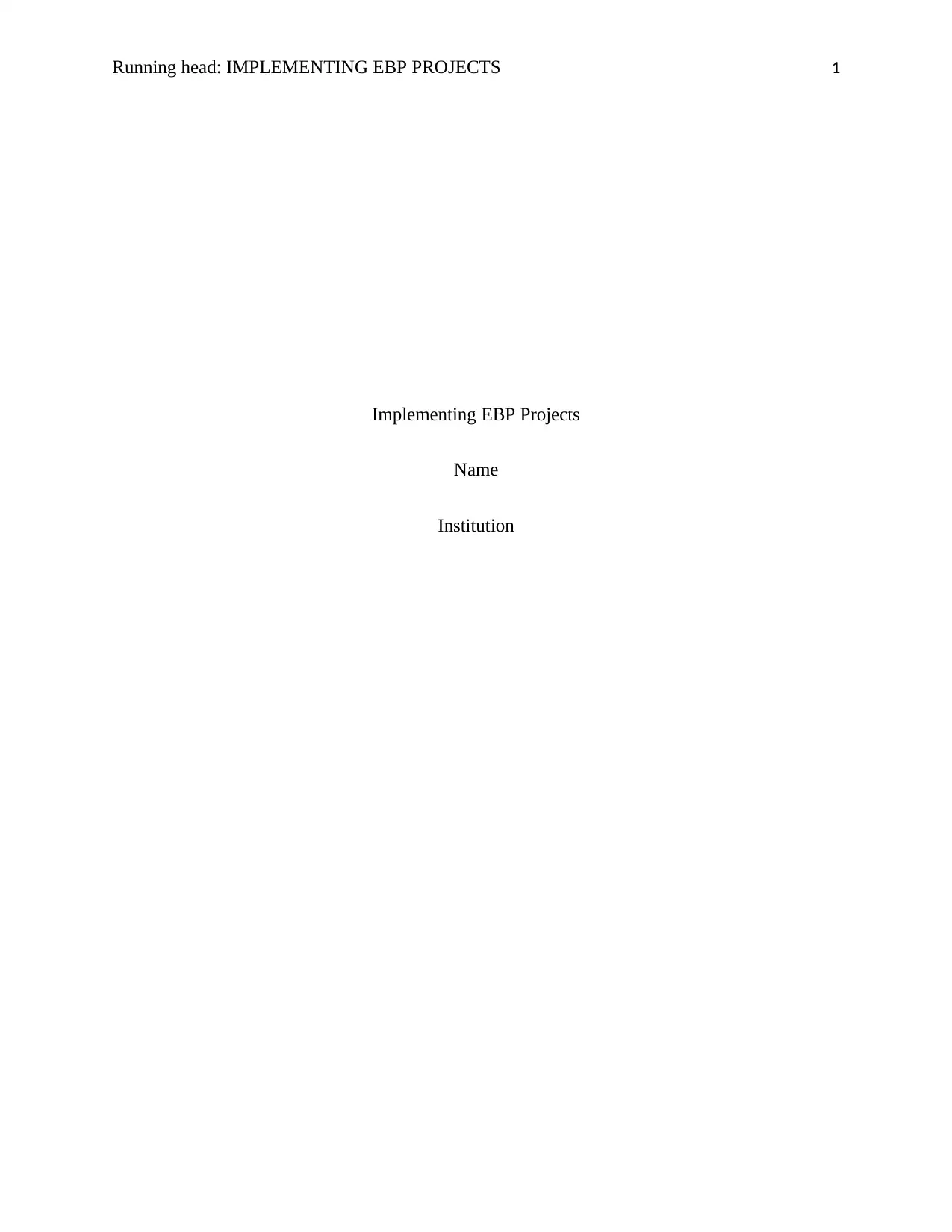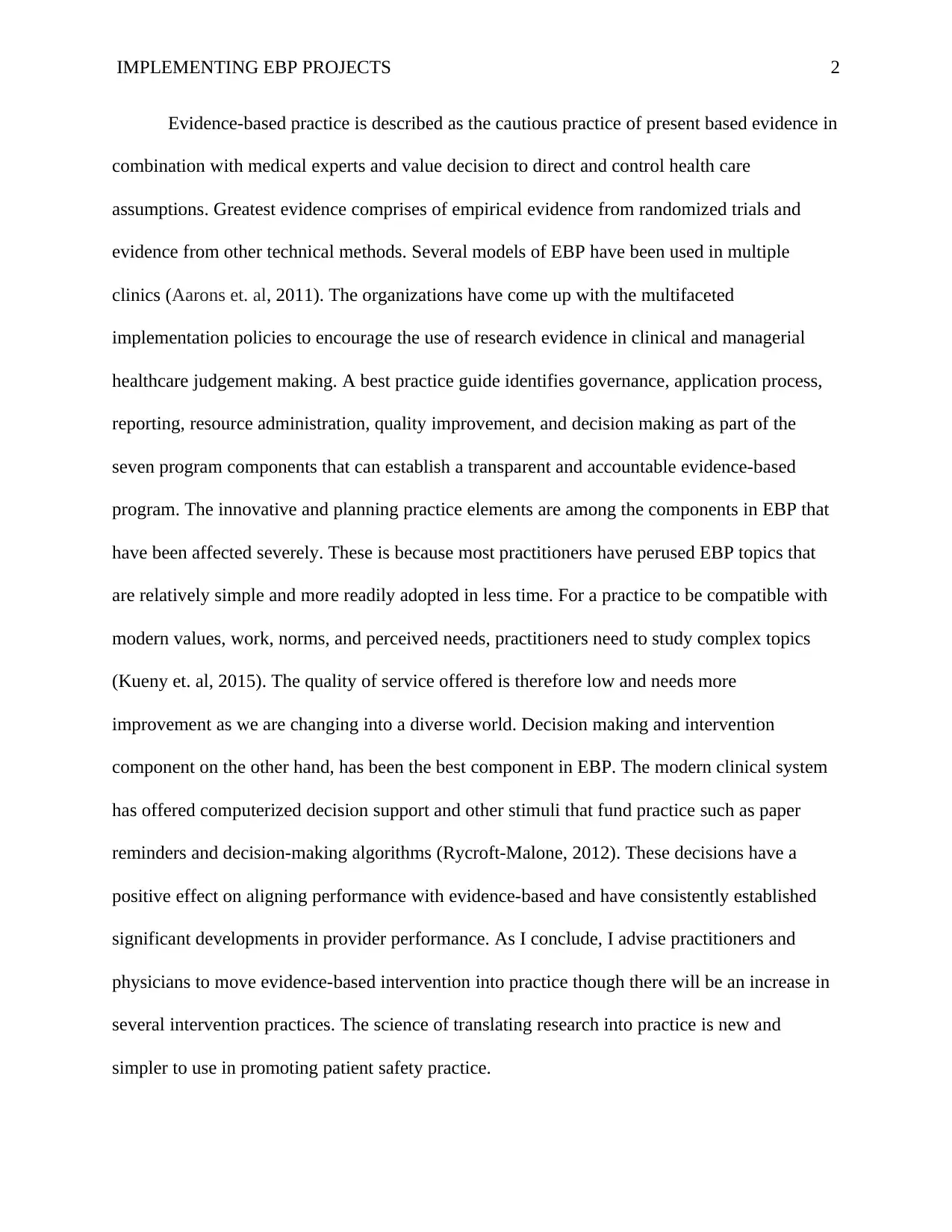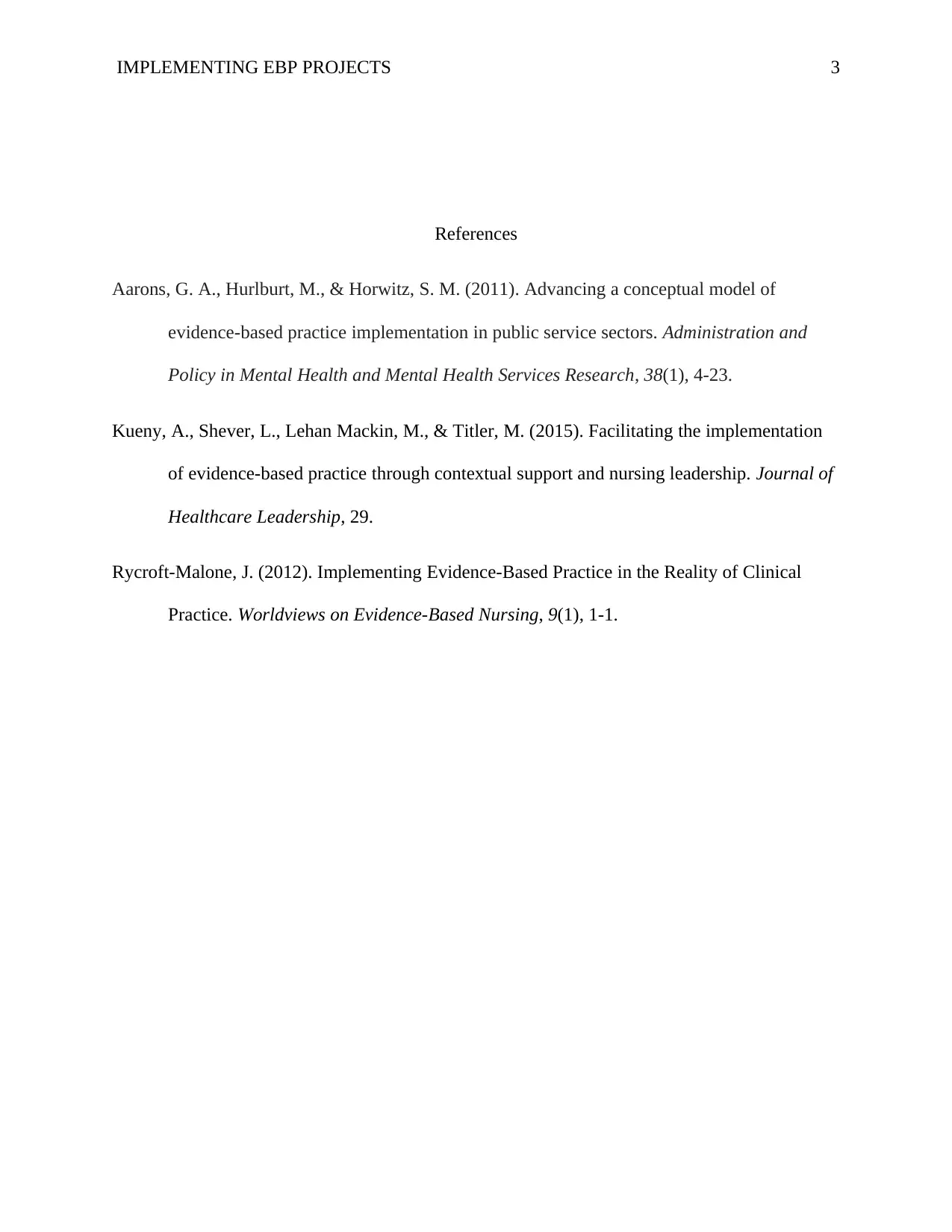Implementing Evidence-Based Practice Projects: Improving Healthcare
VerifiedAdded on 2023/04/20
|3
|473
|119
Essay
AI Summary
This essay discusses the implementation of evidence-based practice (EBP) in healthcare settings. It highlights the importance of using current evidence in conjunction with medical expertise and patient values to guide healthcare decisions. The essay identifies governance, application process, reporting, resource administration, quality improvement, and decision making as key components of a successful EBP program. It notes that innovative and planning aspects of EBP are often challenging due to the complexity of topics, while decision-making and intervention components benefit from computerized support systems. The author advises practitioners to embrace evidence-based interventions to enhance patient safety and improve the quality of service in the evolving healthcare landscape. Desklib provides access to similar essays and solved assignments for students.
1 out of 3










![[object Object]](/_next/static/media/star-bottom.7253800d.svg)